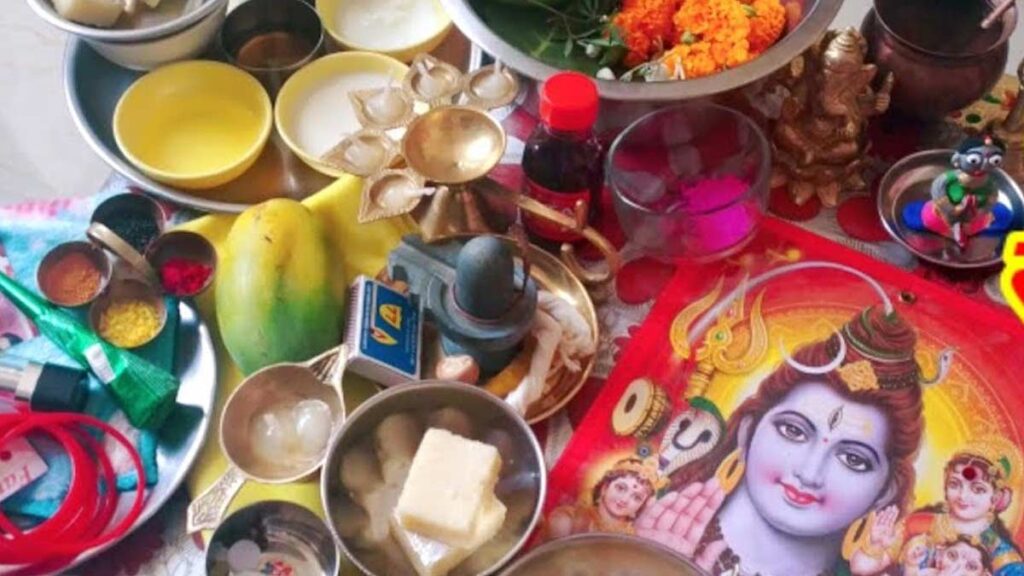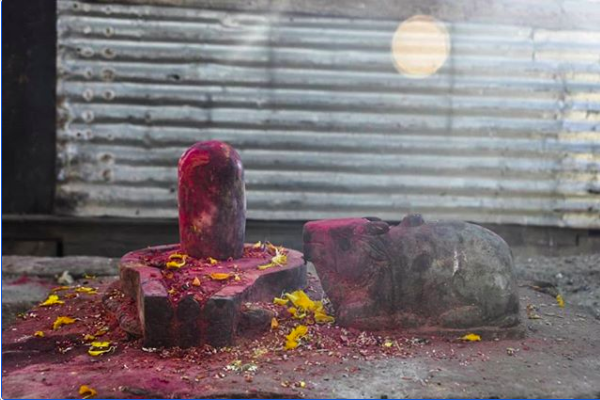why saawan sombar celebrated
Why is Lord Shiva Worshipped in The Month of Saawan : The month of Saawan or Shravan maas is the fifth month in the Hindu lunar calendar, which typically falls in July and August. It’s a time when the monsoon rains pour down, bringing relief from the scorching summer heat and filling the environment with freshness and greenery. shravan month is considered as one of the holiest months in the year as per the hindu calender . But why is this month called Shravan? It is believed that on Poornima or a full moon day or at any time during this month, the Shravan Nakshatra or star rules the skies and hence, this month derives its name from this nakshatra.

Lord Shiva Worshipped In this month, each Monday is celebrated as Shravan Somvar across all temples with the Dharanatra hanging over the Shiva linga, bathing it with holy water and milk, throughout the day into the night. Devotees offer Bael leaves, flowers, holy water and milk, i.e. Falam-Toyam, Pushpam-Patram to lord Shiva on every Shravan Somwar. They fast until the sun goes down and the Nandadeep, the Akhand Diya, burns throughout.
The significance of Lord Shiva in Shravan (Sawan) Month-Lord Shiva Worshipped
According to Hindu mythology, during Samudra Manthan (the churning of the ocean), both gods (devas) and demons (asuras) came together to churn the ocean to obtain Amrit, the nectar of immortality. Along with all the good things that emerged from the ocean there was also a deadly poison called Halahala. While everything was equally distributed among the devas and demons, no one was willing to accept the poison.
Amid this crisis, Lord Shiva stepped and drank the poison, holding it in his throat to prevent it from spreading. This act turned his throat blue, and got him the name Neelkanth, which means “the blue-throated one.”
It is believed that the act of consuming the poison caused immense pain and heat in Shiva’s body. Hence to ease and soothe him down, Lord Bhrama started pouring Ganga jal on him. And ever since then, the practice of offering jal (water) to Shiva became a norm that is practiced even today.
check more : best days to wash hair astrology for unmarried girl
Another Story Behind Shravan Month
Apart from this, there’s another interesting story connecting Shiva to Shravan Maas (Saawan). It started when Sati was reborn as Parvati, the daughter of the King of the Himalayas. From a young age, Parvati felt a strong connection to Lord Shiva. Hence, to win his favor, she performed strong penance and fasted on Mondays during Saawan (Saawan Somvar). Her devotion paid off, and Shiva was so pleased that he accepted her as his wife during this very month. Another belief about Saawan is that while all other deities sleep during this time, Lord Shiva is the one who remains awake. This is why devotees worship him in Saawan, as he is the only one who can grant their wishes.
How to Worship Lord Shiva During the Shravan Maas?
- Start with a Cleansing- Begin your day with a bath to purify yourself physically and wear clean, preferably white or light-colored clothes. Meanwhile, also try to keep your mind free from any negative or intrusive thoughts.
- Visit a Shiva Temple- If possible, visit a nearby Shiva temple. Mornings are the best time for prayers, but any time that works for you is good. If you can’t visit a temple, you can create a small worship space at home.
- Perform Abhishekam- Abhishekam is the ritual of pouring gangajal along with other sacred substances on the Shiva Lingam, which is a symbolic representation of God Shiva. Here are a few things you should add to the holy water before offering it to the lord:
Water: To symbolize purity and the cleansing of sins.
Milk: For nourishment and to seek blessings for health and longevity.
Yogurt: For prosperity.
Honey: For sweetening life and seeking divine grace.
Ghee: For spiritual awakening.
Offer these, one by one while chanting “Om Namah Shivaya” or other Shiva mantras. - Offer Bilva Leaves- Bilva (or Bel) leaves are particularly dear to Lord Shiva. Make sure the leaves you offer are fresh and are in a pair of three leaflets. Place them on the Shiva Lingam while reciting prayers.
- Light a Lamp and Incense- Light an oil lamp (diya) and incense sticks to fill the air with pure fragrance and positivity. The lamp symbolizes the removal of darkness and ignorance, while incense purifies the air.
- Chant Mantras and Pray- Chanting mantras dedicated to Lord Shiva helps in focusing your mind and invoking his blessings. Some popular ones include:
Om Namah Shivaya
Meaning: I bow to Shiva
Om Tryambakam Yajamahe Sugandhim Pushti Vardhanam
Urvarukamiva Bandhanan Mrityor Mukshiya Maamritat
Meaning: Om, we offer our reverence to the three-eyed deity, whose presence is both fragrant and nourishing. Just as cucumbers are freed from their vines, may we too be released from the chains of mortality and attachment to transient things, allowing us to remain connected to the eternal essence that pervades all.
ALSO READ : lizard falling on right hand





